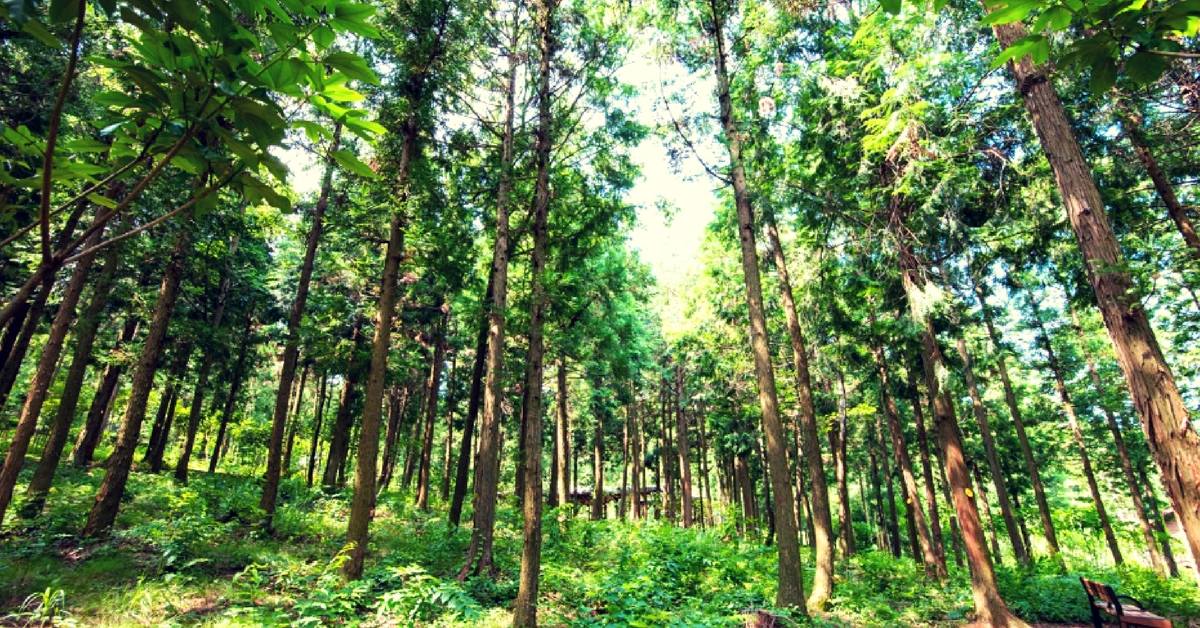India Increases Tree Cover, Ranks Among Top 10 Countries in Forest Area
In a mere span of two years, the country has managed to increase its forest and tree cover by a whopping 8,021 sq km; the India State Forest Report 2017 released on Monday by the Environment Ministry revealed.

As the world continues to reel under the pressure of its fast disappearing green patches, India is setting a new trend.
In a mere span of two years, the country has managed to increase its forest and tree cover by a whopping 8,021 sq km; the India State Forest Report 2017 released on Monday by the Environment Ministry revealed.

The 15th report in the series of biennial reports that officially records India’s forest and tree cover, it mentions that over 24.39% of the country’s geographical area now constitutes of green cover.
Recorded using satellite data and followed up by ‘ground truthing,’ the total forest cover is estimated to be 7,08,273 sq km (21.54% of the country’s geographical area), and the total tree cover is estimated to be 93,815 sq km, (2.85%).
The Environment ministry attributed this rise in the green cover to the success of multiple afforestation programmes. India now ranks 10th in the world for forest area and eighth for annual forest gain.
A detailed breakdown of the numbers reveals that states like Andhra Pradesh, Karnataka, Kerala, Odisha and Telangana have contributed to the maximum increase in green cover. But unfortunately, six northeastern states including Mizoram, Nagaland, Arunachal Pradesh, Tripura, Meghalaya and Sikkim have seen a steep loss of green cover estimated at 630 sq km.
The three states that have recorded the maximum increase in forest cover include Andhra Pradesh with 2141 sq km, followed by Karnataka with 1101 sq km and Kerala with 1043 sq km.
If one were to take into account the overall forest cover in the country, Madhya Pradesh records the largest forest cover regarding area at 77,414 sq km, followed by Arunachal Pradesh at 66,964 sq km and Chhattisgarh at 55,547 sq km.
With regards to the percentage of forest cover in comparison to the total geographical area, Lakshadweep has the highest forest cover with 90.33%, followed by Mizoram at 86.27% and Andaman & Nicobar Island with 81.73%.
The forest cover for assessment is divided into three categories based on its density into ‘very dense’, ‘moderately dense’ and ‘open’ forest.
Though the ‘very dense’ forest cover has increased in the last two years, the ‘moderately dense’ forests are shrinking, which is dangerous.
Voicing this source of worry, forest expert from Centre for Science and Environment (CSE) Ajay Saxena in an interview with the Times of India said, “This negative correlation means that India is losing good forests for developmental pressures, forest degradation and climate change.”
Also, the loss of 630 sq km of pristine forests in the eastern Himalayas isn’t a good sign, say experts. The maximum forest cover reduction in the north-eastern states is recorded at Mizoram (531 sq km) followed by Nagaland (450 sq km) and Arunachal Pradesh (190 sq km).
You may also like: Ooty’s Amazing New Project Will Not Only Reduce Waste, But Help Farmers Too!
Either way, the ministry has commended the increased in the very dense forest to 98,158 sqkm from 85,904 sq km in 2015. Environment and forests minister Harsh Vardhan said, “This is very heartening as VDF absorbs maximum carbon dioxide from the atmosphere.”
He expressed that the increase in forest cover has boosted India’s commitment to the Paris Agreement on climate change. This has further strengthened the country’s resolve to create additional carbon sink (2.5 to 3 billion tonnes of CO2 equivalent) through increasing forest and tree cover by 2030.
The report also mentioned that the total mangrove cover is estimated to be 4,921 sq km with an increase of 181 sq km.
Like this story? Or have something to share?
Write to us: [email protected]
Connect with us on Facebook and Twitter.
NEW: Click here to get positive news on WhatsApp!
If you found our stories insightful, informative, or even just enjoyable, we invite you to consider making a voluntary payment to support the work we do at The Better India. Your contribution helps us continue producing quality content that educates, inspires, and drives positive change.
Choose one of the payment options below for your contribution-
By paying for the stories you value, you directly contribute to sustaining our efforts focused on making a difference in the world. Together, let’s ensure that impactful stories continue to be told and shared, enriching lives and communities alike.
Thank you for your support. Here are some frequently asked questions you might find helpful to know why you are contributing?


This story made me
-
97
-
121
-
89
-
167













